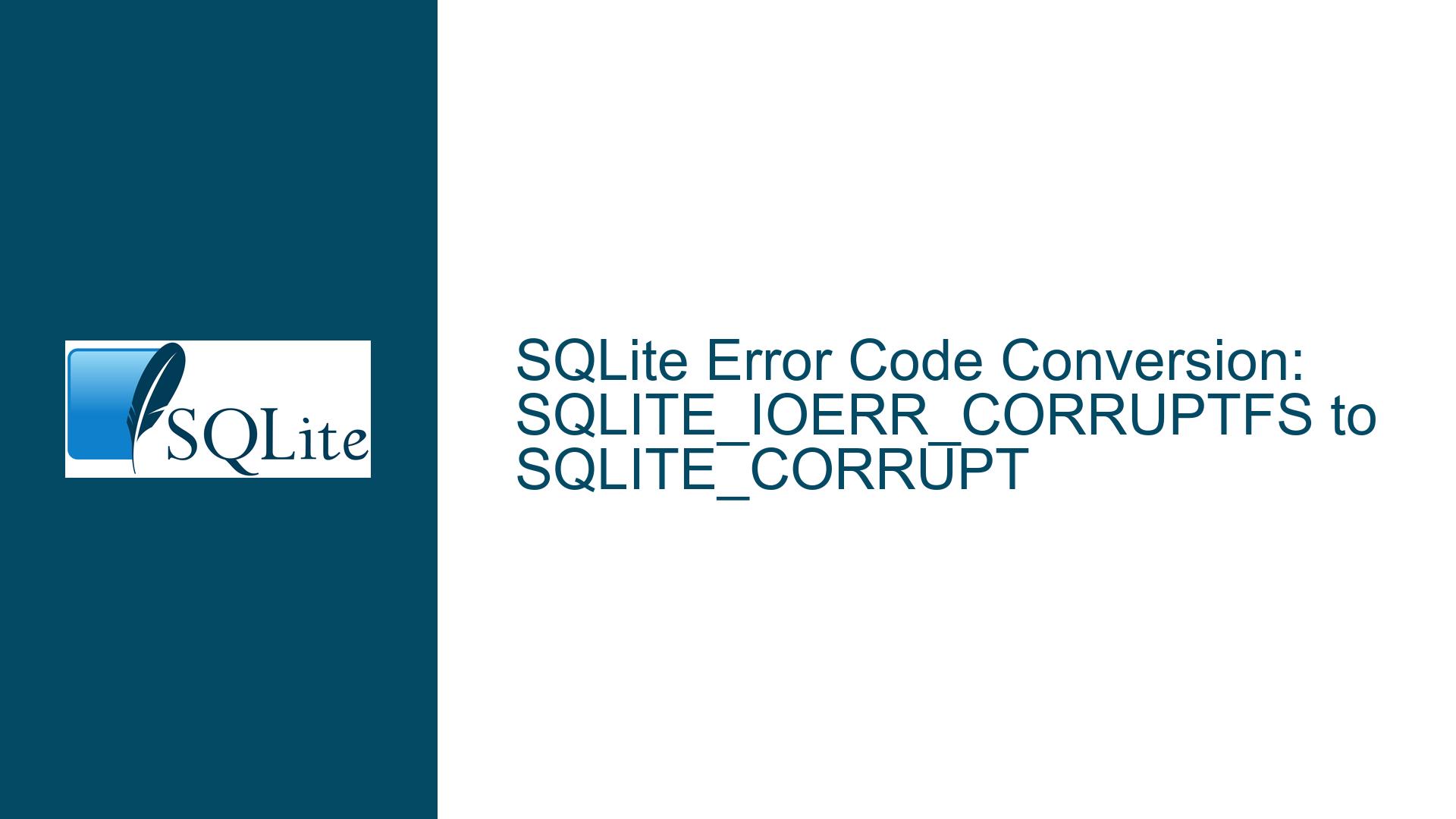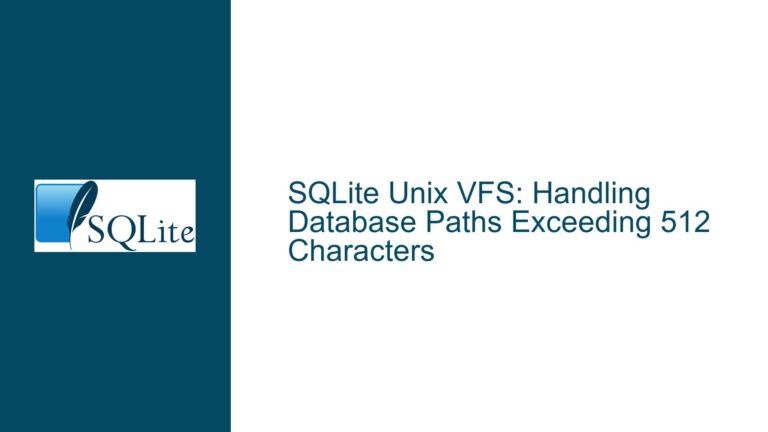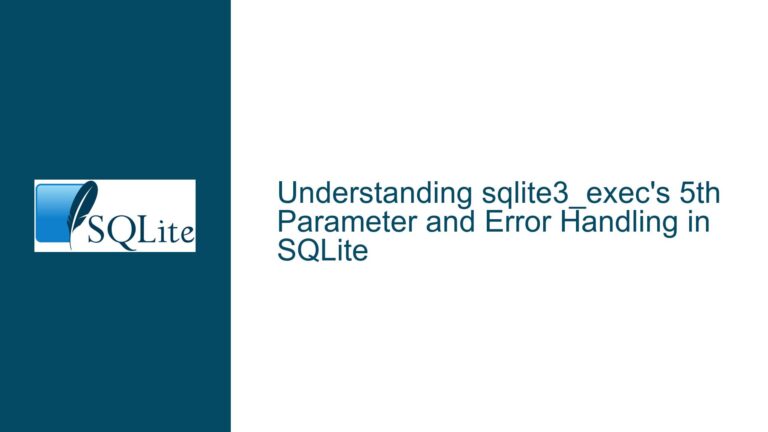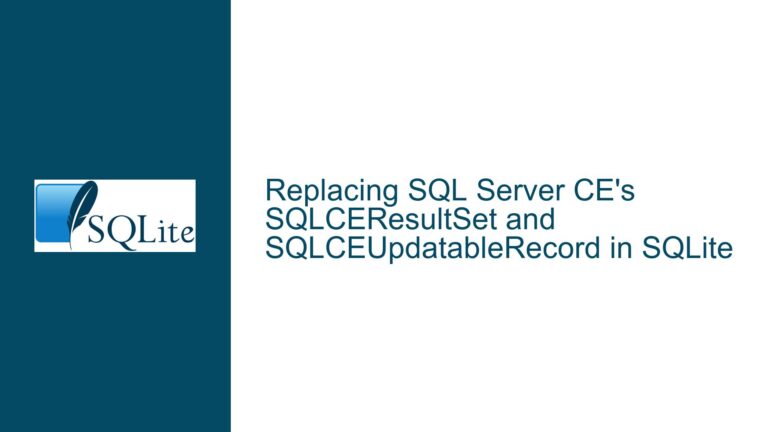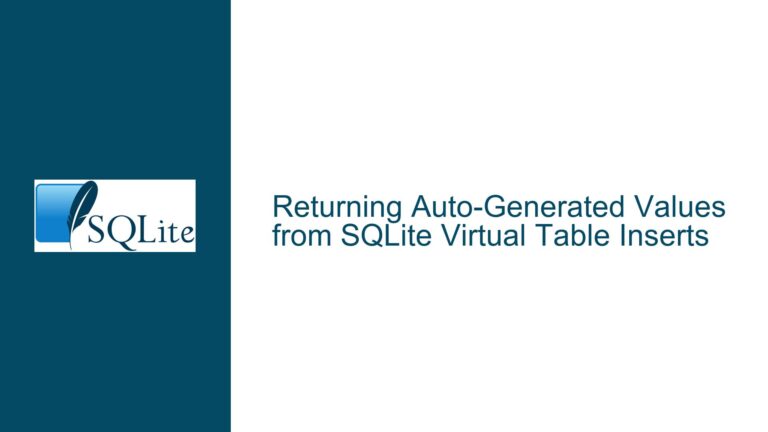SQLite Error Code Conversion: SQLITE_IOERR_CORRUPTFS to SQLITE_CORRUPT
SQLite_IOERR_CORRUPTFS Error Code Conversion to SQLITE_CORRUPT
In SQLite, error handling is a critical aspect of ensuring data integrity and providing meaningful feedback to applications. One specific scenario involves the conversion of the SQLITE_IOERR_CORRUPTFS error code into a more generic SQLITE_CORRUPT error before it is returned to the application. This conversion raises questions about the rationale behind such a design choice and the implications it has on error handling and debugging.
The SQLITE_IOERR_CORRUPTFS error code is designed to indicate that the file system has detected corruption during a read operation. However, before this error is returned to the application, it is converted into a SQLITE_CORRUPT error. This conversion occurs because some intermediate processing logic within SQLite expects only SQLITE_IOERR errors from read operations. This expectation is rooted in historical design decisions, such as the handling of SQLITE_IOERR_NOMEM, where similar conversions have been necessary to maintain consistency in error handling.
The conversion of SQLITE_IOERR_CORRUPTFS to SQLITE_CORRUPT is not arbitrary but is instead a deliberate choice to align with the internal error handling mechanisms of SQLite. This alignment ensures that the error handling logic remains consistent and predictable, even when dealing with complex file system issues. However, this conversion also means that the application loses some specificity in the error information it receives, which could potentially complicate debugging and error resolution.
Intermediate Processing Logic and Error Code Expectations
The intermediate processing logic in SQLite plays a crucial role in managing the flow of error codes from the point of detection to the point of return to the application. This logic is designed to handle a variety of error conditions, including those related to I/O operations, memory allocation, and file system integrity. One of the key expectations of this logic is that read operations will only return SQLITE_IOERR errors, which are then processed and potentially converted into other error codes before being returned to the application.
The expectation that read operations will only return SQLITE_IOERR errors is based on historical design decisions that have shaped the error handling mechanisms in SQLite. For example, the SQLITE_IOERR_NOMEM error code, which indicates a memory allocation failure during an I/O operation, is also subject to conversion before being returned to the application. This conversion ensures that the error handling logic remains consistent and predictable, even when dealing with complex error conditions.
The conversion of SQLITE_IOERR_CORRUPTFS to SQLITE_CORRUPT is a direct result of this expectation. When the file system detects corruption during a read operation, it generates an SQLITE_IOERR_CORRUPTFS error code. However, because the intermediate processing logic expects only SQLITE_IOERR errors from read operations, this error code is converted into a SQLITE_CORRUPT error before being returned to the application. This conversion ensures that the error handling logic remains consistent, but it also means that the application loses some specificity in the error information it receives.
Implementing Consistent Error Handling with PRAGMA journal_mode and Database Backup
To address the challenges posed by the conversion of SQLITE_IOERR_CORRUPTFS to SQLITE_CORRUPT, it is important to implement consistent error handling mechanisms that can provide meaningful feedback to the application while maintaining the integrity of the database. One approach to achieving this is through the use of the PRAGMA journal_mode statement and regular database backups.
The PRAGMA journal_mode statement allows developers to configure the journaling mode used by SQLite, which can have a significant impact on the database’s ability to recover from errors. By setting the journal mode to WAL (Write-Ahead Logging), for example, developers can improve the database’s resilience to corruption and ensure that it can recover more gracefully from errors such as SQLITE_IOERR_CORRUPTFS. Additionally, regular database backups can help mitigate the impact of corruption by providing a reliable fallback in the event of an error.
When implementing these strategies, it is important to consider the specific requirements of the application and the environment in which it operates. For example, in environments where power failures are common, it may be necessary to use a more robust journaling mode, such as TRUNCATE or PERSIST, to ensure that the database can recover from corruption. Similarly, in applications where data integrity is critical, regular database backups should be performed to minimize the risk of data loss.
In addition to configuring the journaling mode and performing regular backups, developers should also consider implementing custom error handling logic that can provide more detailed feedback to the application. This logic can be used to capture and log specific error codes, such as SQLITE_IOERR_CORRUPTFS, before they are converted into more generic error codes. By capturing this information, developers can gain valuable insights into the root causes of errors and take appropriate action to resolve them.
In conclusion, the conversion of SQLITE_IOERR_CORRUPTFS to SQLITE_CORRUPT in SQLite is a deliberate design choice that ensures consistency in error handling. However, this conversion also means that applications lose some specificity in the error information they receive, which can complicate debugging and error resolution. By implementing consistent error handling mechanisms, such as configuring the journaling mode, performing regular backups, and capturing detailed error information, developers can mitigate the impact of this conversion and ensure that their applications can recover gracefully from errors.
